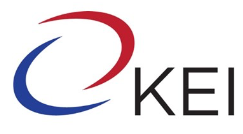2004 Posts located
Asia
2004 Posts located
The year 2006 witnessed increasing concern among both Americans and South Koreans that their alliance of more than 50 years might be in jeopardy. Differences between the two governments over…
May 25, 2011
Monetary and Exchange Rate Policy in Declining Centrally Planned Economies and in Early Transition Economies: Some Observations of North Korea
May 25, 2011
North Korean Economic Reform: An Uncertain Future for a Third-Way Exploration
May 25, 2011
May 25, 2011
2018 has been an incredibly eventful year for both the Koreas and the U.S.-Korea relationship: from North Korea’s participation in the Winter Olympics at the start of the year to…
December 21, 2018
Interest in the Korean peninsula is generally very narrow in the United States – it tends to be focused on North Korea and security issues, particularly the country's ballistic and…
December 14, 2018
Last Friday, on November 30, 2018, President George H.W. Bush passed away. In the days that followed, there were many discussions in the foreign policy community about the late president's…
December 7, 2018
What does a unified Korea look like? Beyond the question of whether the government of this new country will be a unitary or federal one, how will the people –…
November 30, 2018
In May of this year, the United States introduced a draft UN Security Council Resolution (S/2022/431) that would have responded to a North Korean ICBM test on March 24. By chance, the formal Chinese and Russian rejection of the proposal—which included additional sanctions on Pyongyang--came in the wake of a landmark decision taken by the…
August 11, 2022
After several years of frozen diplomacy, the current Korean government's drive to reset relations with Japan seems to be on an upswing. Even before taking office, President Yoon Suk-Yeol dispatched a delegation of aides to meet with Japanese officials in Tōkyō. He followed that with attendance at a trilateral meeting with Prime Minister Kishida Fumio…
August 2, 2022
At the conclusion of the 50th session of the United Nations Human Rights Council in Geneva, the President of the Council named eight individuals to human rights related positions, including Elizabeth Salmón as the “Special Rapporteur on the situation of human rights in the People’s Democratic Republic of Korea.” Salmón is a professor of international…
July 25, 2022
Newly inaugurated president Yoon Suk Yeol made his international debut at the NATO summit held in Madrid, Spain. South Korea and three other Indo-Pacific states were invited to summit ahead of publication of the alliance's new "strategic concept," that mentions China for the first time. Experts say South Korea can expand its longstanding relations with…
